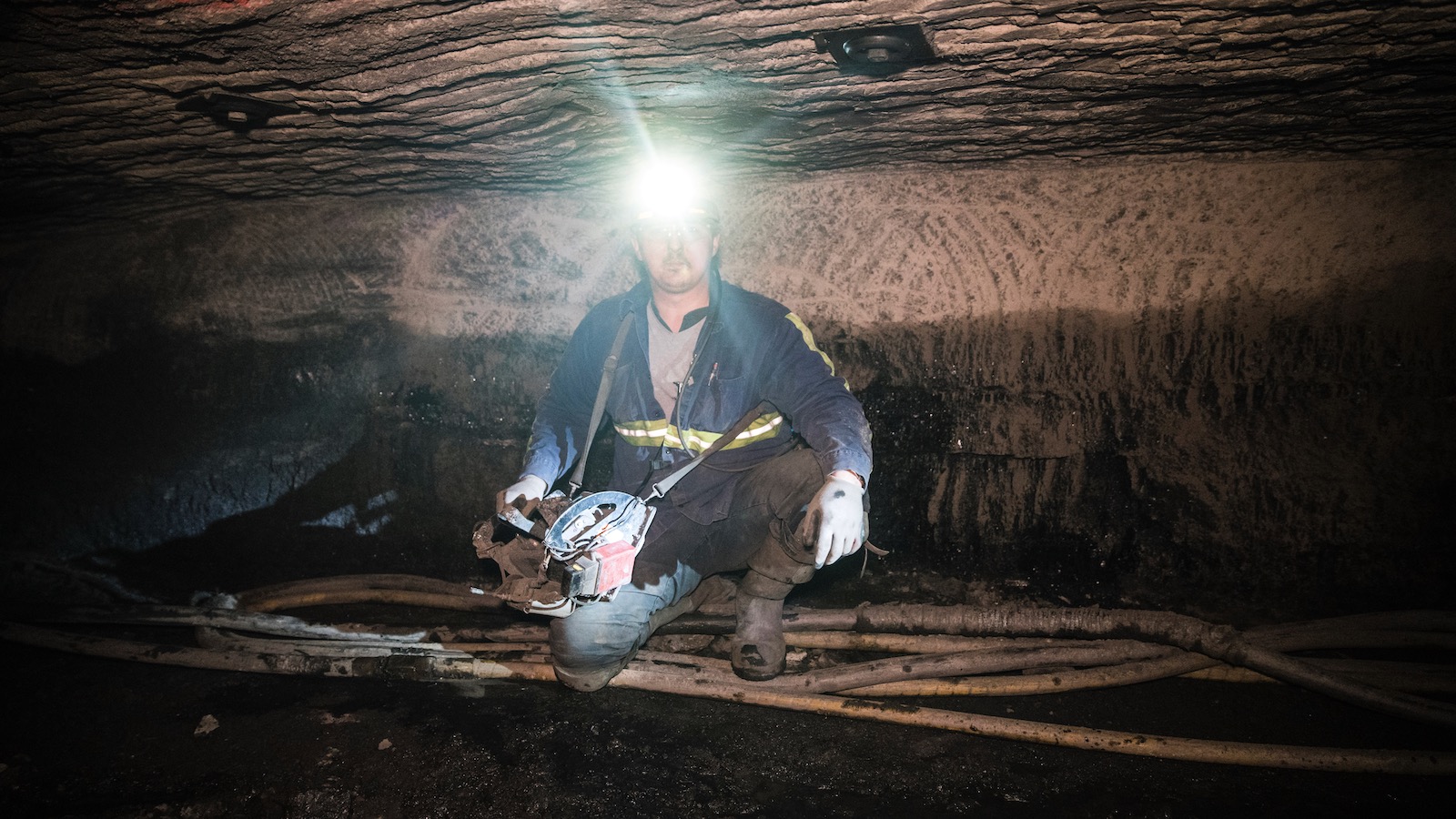After decades of intensive lobbying, petitioning, heartfelt testimony and the deaths of countless miners, federal regulators have finally taken a major step toward tighter restrictions on exposure to silica dust, a change that could save thousands of lives.
The Mine Safety and Health Administration has proposed halving the permissible level of silica exposure to 50 micrograms per cubic meter. That’s in line with what the Occupational Safety and Health Administration has held other industries to since 2016. Silica dust is toxic, and long-term exposure can cause a slow but fatal hardening of lung tissue called progressive massive fibrosis, or, as it’s known within coal-mining areas, black lung disease. The toxin increasingly abounds in mines as companies plumb thinner coal seams with greater impurities. Advocates of the tighter guideline, which will apply to all miners, regardless of what they dig from the earth, say it could go a long way toward protecting workers. But even as they celebrate, they’re strategizing on how to make the rule even stronger.
“There’s a lot more work to be done,” said Vonda Robinson, vice president of the Black Lung Association.
Robinson knows the incalculable costs of lax mine safety regulations. Her husband, who worked 30 years underground in southwestern Virginia, was diagnosed with black lung at the age of 47 and has spent years entangled in byzantine federal benefits systems. She’s been fighting for a stricter standard as long as almost anyone, but she worries that there are still loopholes that the industry will readily exploit.
“They just use the miner to get their pockets full of money,” Robinson said. “The company’s all about production, production, production, let’s get the coal out, let’s get the coal out. They will not do correct sampling.”
Federal mining regulators, along with the Kentucky and West Virginia coal associations, did not respond to requests for comment.
Much has been made of the companies’ responsibility for dust sampling to determine how much silica and other contaminants miners are exposed to; that task is left to the industry because the Mining Safety and Health Administration does not have the funding or personnel to do it. Robinson says regulators must deploy more inspectors if the higher standard, which awaits public comments and clearance from multiple agencies, is to be enforced. The Black Lung Association and other advocacy groups are preparing to lobby for more funding to the agency and stricter sampling oversight.
Robinson feels buoyed by the movement’s victories, though. Last year, campaigns succeeded in securing a permanently higher rate for the black lung excise tax, which the Internal Revenue Service levies on coal companies to support the fund from which afflicted miners draw federal benefits. (Robinson’s next goal is raising that benefit, which stands at just $737 per month or about $1,100 for miners with a dependent.)
Alongside other labor groups, miners and their advocates have long sought tighter silica standards. Although OSHA made silica a priority in 1995, when the National Institute for Occupational Safety and Health found a need for stricter exposure standards, it didn’t update its standard until 2016. The Mine Safety and Health Administration hasn’t updated its guideline since 1985. Black lung patients and their advocates petitioned the agency for a revision in 2011, but it didn’t send to send one to the Office of Management and Budget for review until last year. Public pressure increased in the months preceding Friday’s announcement on June 30. Last week, U.S. senators Joe Manchin, Bob Casey, Sherrod Brown, John Fettermain, and Tim Kane, all of whom represent coal-producing states, signed an open letter urging prompt action. They voiced support for the rule after its announcement.
“We applaud the Mine Safety and Health Administration’s new proposed silica rule to enhance health protections for miners across the country,” they said in a statement. “We urge swift implementation of this rule because protecting our hard-working miners from dangerous levels of silica cannot wait.”
If adopted, the rule will require routine medical testing of all mineworkers, and require companies to find ways of limiting silica exposure through measures like respirators. Once the rule is posted in the Federal Register, MSHA will initiate a 45-day comment period, which will be punctuated by public hearings in Denver and Arlington, Virginia. Both will be streamed online.




